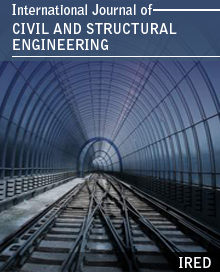Process-Morphology-Property-Relationships of Titania-filled Polypropylene Nanocomposites
Author(s) : ALOIS K. SCHLARB , BUNCHA SUKSUT , DWI SUWITANINGSIH , LEYU LIN
 Abstract
Abstract
Although the research and development of nanocomposites for almost a decade focused on structural properties, these properties remained until today far below expectations, which were forecast at the beginning of the new millennium. However, even if it is well known that the processing history has a major impact on the structure and properties of final components, this aspect was not subject of intensive research in the past. The talk focuses on the role of the manufacturing sequence on the morphology and properties of polypropylene based nanocomposites. In general it can be stated that the incorporation of nano-sized TiO2-fillers improves the some mechanical properties of the resulting nanocomposites as long as the production enables a good dispersion and distribution of the nanofiller agglomerates. However, with increasing filler loading, the morphology of injection molded parts changes: The size of the spherulites and the degree of crystallinity decreases while the crystallization/solidification proceeds faster. Simultaneously a slight improvement in the mechanical performance up to a certain filler loading can be found. However, improved mechanical properties of the nanocomposites in the final component cannot be exploited if its production in a subsequent welding step is required. The reason for the decrease in the mechanical properties is the decrease in the viscosity by the addition of the fillers, and thereby caused extreme flow processes and subsequent orientation of the fillers as well as the weakening of the filler/matrix-interphase in the welding zone. In summary, it can be observed that nanocomposites increasingly offer great opportunities for applications where single-component materials reach their limits. The key to success is the processing. Therefore it is of crucial importance that the total manufacturing history is understood and controlled. Only then it is possible to sustainably exploit the potential of polymer nanocomposites in the application.

About Journals
- ISSN No. : 2372-3971
- Editor Chief : Dr. Cristina Gentilini, Alma mater Studiorum - University of Bologna, Italy
- Related Subjects : Corrosion Of Reinforcement In HVFA Concrete, Advanced Construction Materials : Microsilica In Concrete, Oceans as a Non-conventional Source of Energy, Silica Fume Concrete
 Full Paper PDF
Full Paper PDF